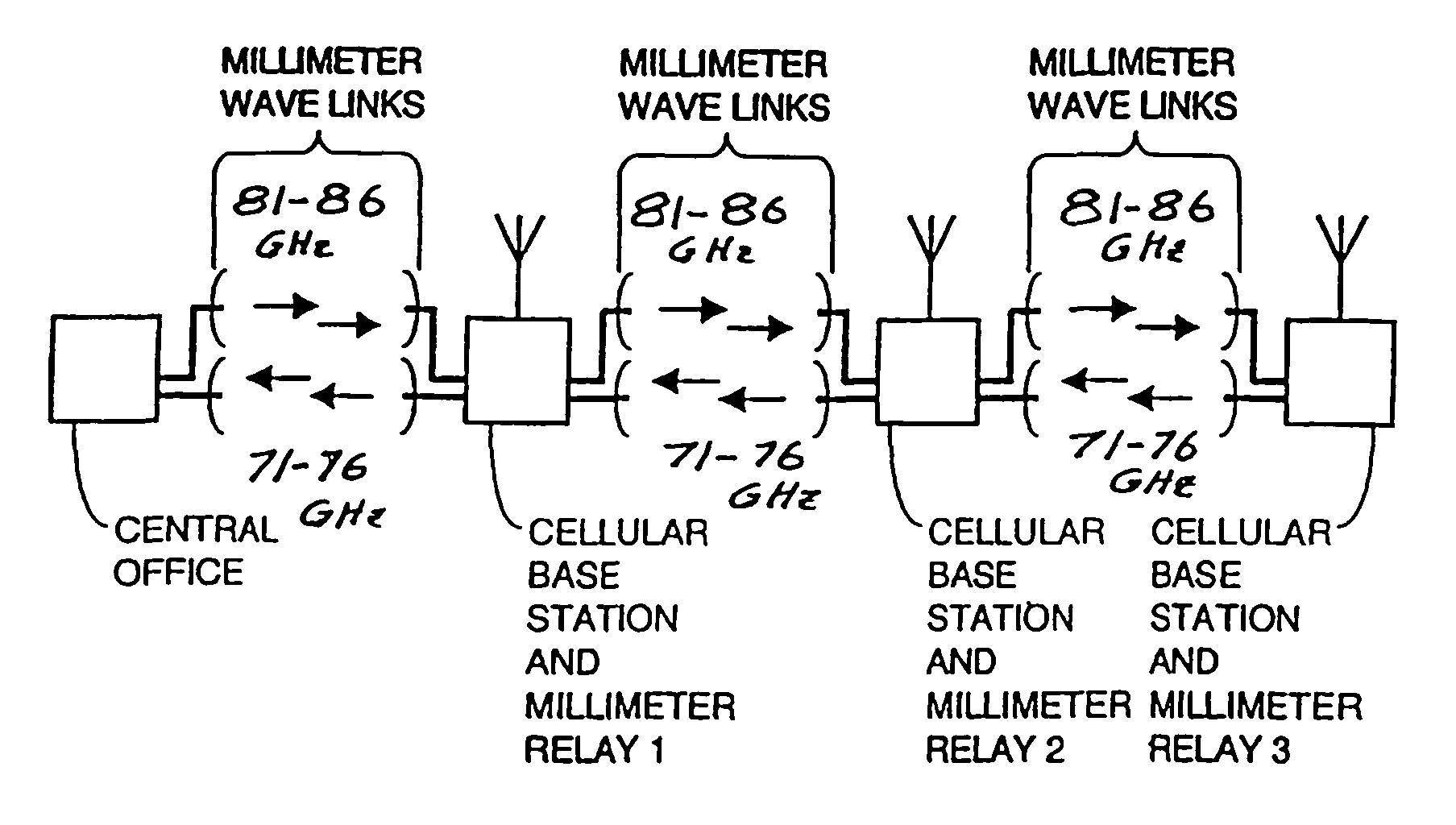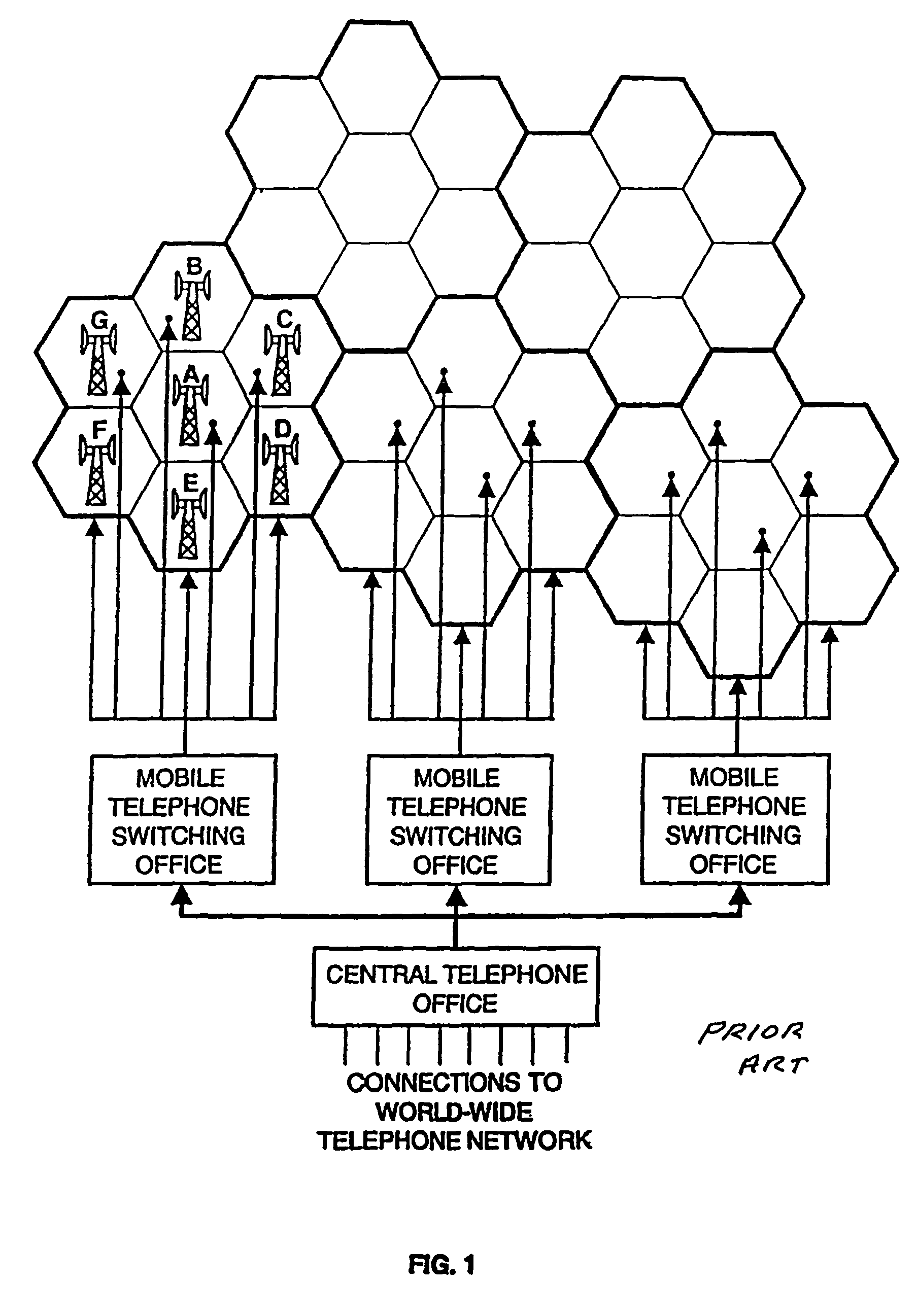Wireless millimeter wave communication system with mobile base station
a millimeter wave and mobile base station technology, applied in the field of wireless millimeter wave communication system with mobile base station, can solve the problems of insufficient utilization of fiber optic trunk lines, etc., to achieve efficient utilization of low-frequency wireless internet access bandwidth, efficient utilization of millimeter wave trunk line bandwidth, and efficient utilization of low-frequency bandwidth
- Summary
- Abstract
- Description
- Claims
- Application Information
AI Technical Summary
Benefits of technology
Problems solved by technology
Method used
Image
Examples
Embodiment Construction
Millimeter Wave Trunk Lines
[0042]A first preferred embodiment of the present invention comprises a system of linked millimeter-wave radios which take the place of wire or fiber optic links between the cells of a cellular network. A second preferred embodiment of the present invention comprises a system of linked millimeter wave radios which take the place of wire or fiber optic links between wireless Internet access base stations or wireless computer networking base stations. The use of the millimeter-wave links can eliminate the need to lay cable or fiber, can be installed relatively quickly, and can provide high bandwidth normally at a lower cost than standard telecom-provided wires or cable. Since the millimeter-wave links simply up and down convert the signal for point-to-point transmission, the data and protocols used by the original signals are preserved, making the link ‘transparent’ to the user. These trunk lines can support a conventional system operating at standard cellul...
PUM
 Login to View More
Login to View More Abstract
Description
Claims
Application Information
 Login to View More
Login to View More - R&D
- Intellectual Property
- Life Sciences
- Materials
- Tech Scout
- Unparalleled Data Quality
- Higher Quality Content
- 60% Fewer Hallucinations
Browse by: Latest US Patents, China's latest patents, Technical Efficacy Thesaurus, Application Domain, Technology Topic, Popular Technical Reports.
© 2025 PatSnap. All rights reserved.Legal|Privacy policy|Modern Slavery Act Transparency Statement|Sitemap|About US| Contact US: help@patsnap.com



